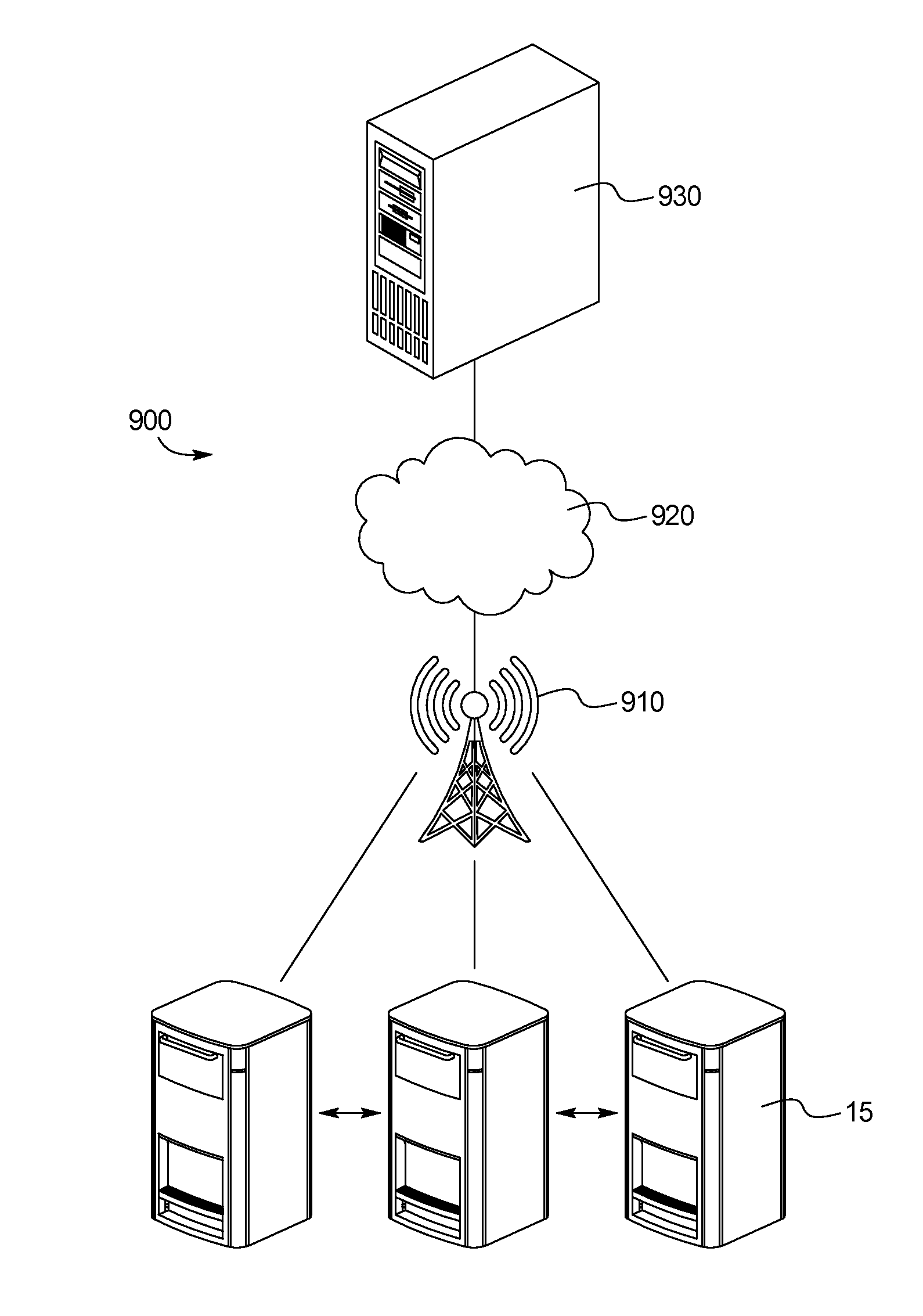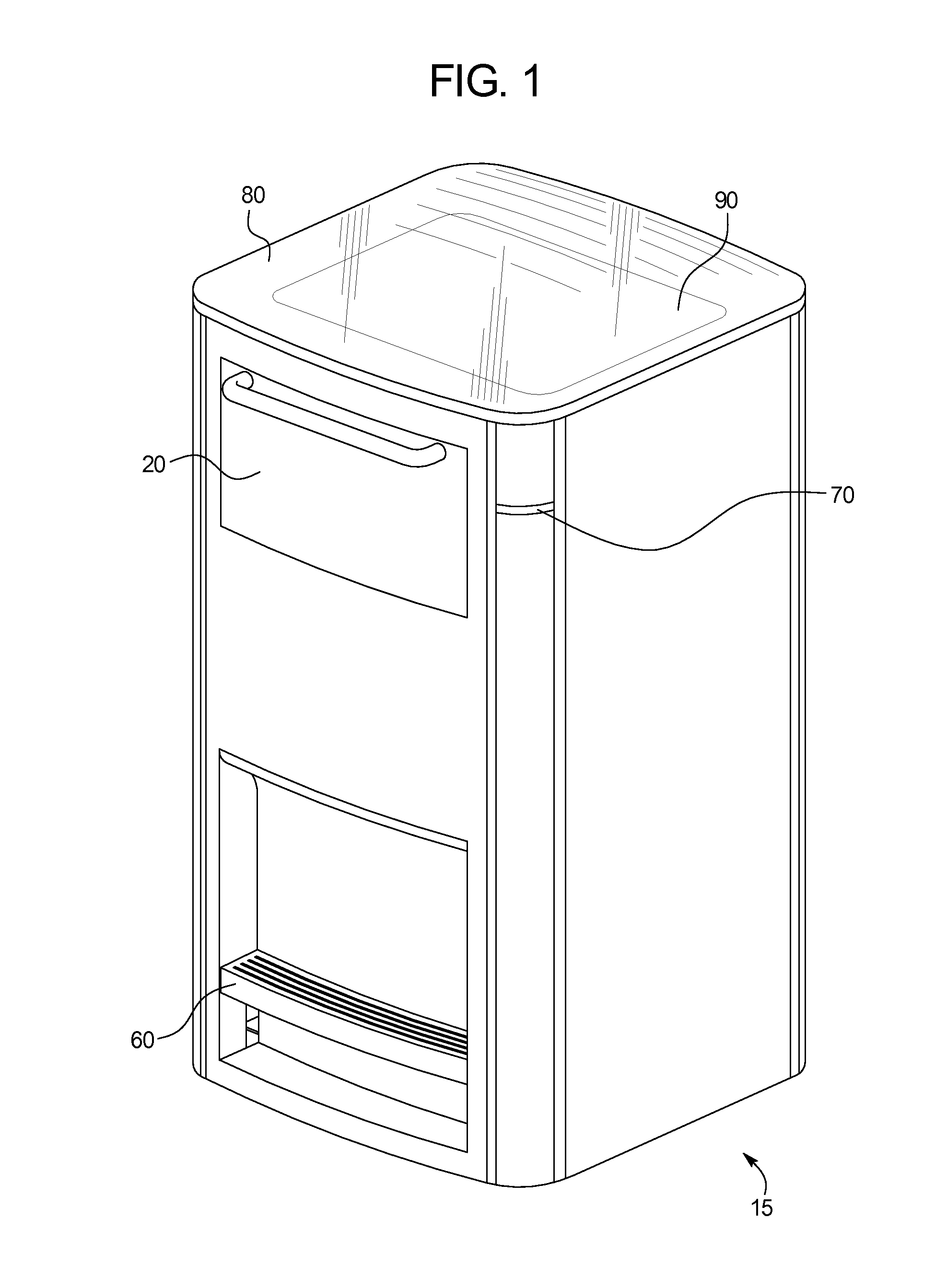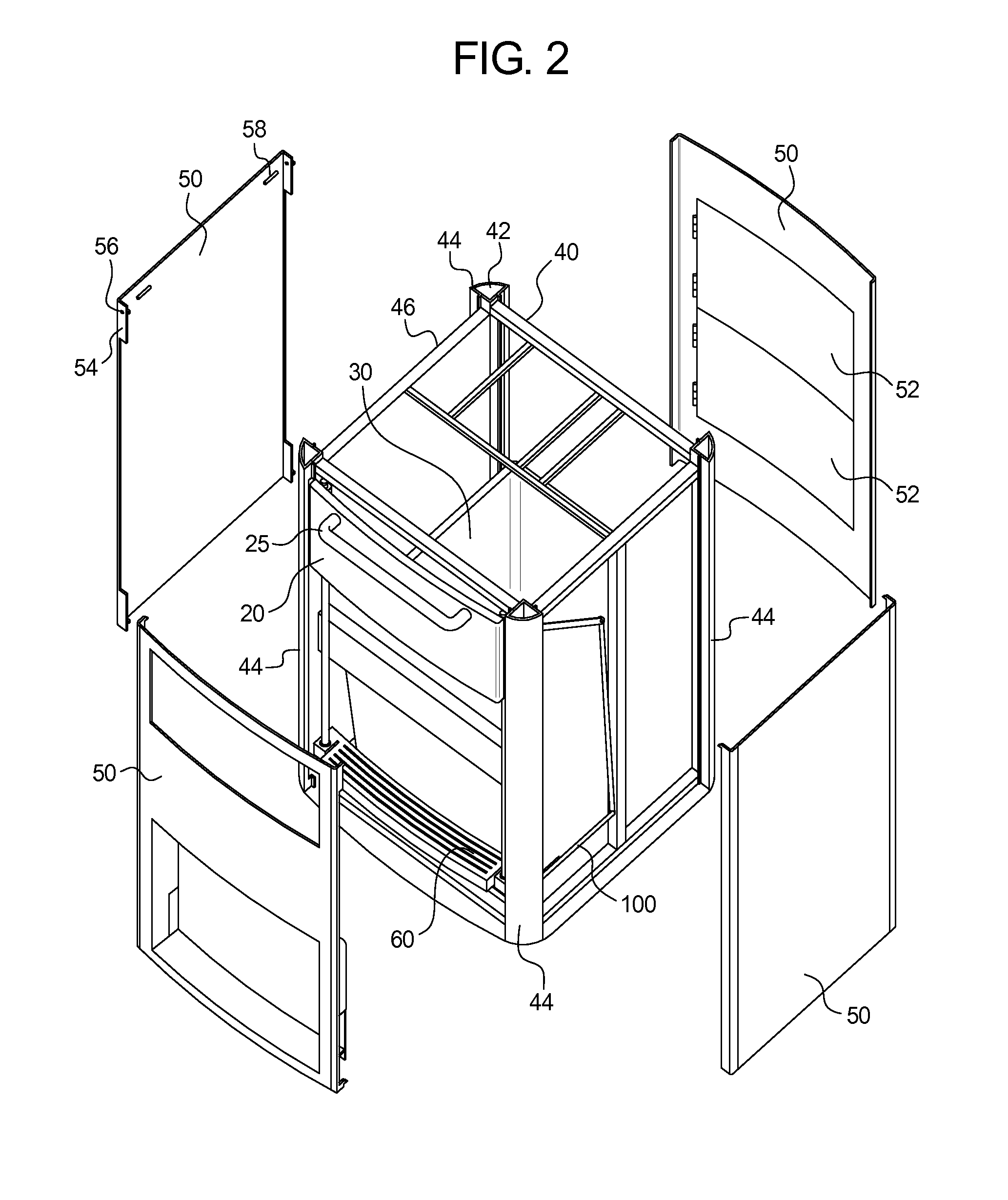Electrical Powered Weight and Fullness Level System
a technology of electric power and fullness, applied in transmission systems, instruments, domestic applications, etc., can solve the problems of poor resource utilization, poor labor utilization, and poor risk for organizations and collection workers, so as to optimize the use of collection resources, reduce collection times, and efficiently use energy
- Summary
- Abstract
- Description
- Claims
- Application Information
AI Technical Summary
Benefits of technology
Problems solved by technology
Method used
Image
Examples
Embodiment Construction
[0059]FIG. 1 illustrates an example of a collection apparatus 15. FIG. 2 illustrates an exploded view of the collection apparatus 15 to show its interior. As shown in FIG. 2, the collection apparatus 15 includes a deposit door 20 for receiving collected materials that fall into the collection bin 30. A foot pedal 60 may be included to permit a user to operate the deposit door 20 by foot. One or more indicators 70 may be provided to show the current state of the collection apparatus 15. The collection apparatus 15 may further include a compacting mechanism 400 (FIGS. 7a-9). The collection apparatus 15 may include a solar panel 90 mounted at the top or within the collection apparatus 15. The solar panel 90 may be protected from the elements by a cover 80, such as a clear, thermoformed polycarbonate. The solar panel 90 may be adjustable, either manually or electromechanically, to improve sun exposure. Collection and service doors 52 may be provided to permit access to the collected mat...
PUM
 Login to View More
Login to View More Abstract
Description
Claims
Application Information
 Login to View More
Login to View More - R&D
- Intellectual Property
- Life Sciences
- Materials
- Tech Scout
- Unparalleled Data Quality
- Higher Quality Content
- 60% Fewer Hallucinations
Browse by: Latest US Patents, China's latest patents, Technical Efficacy Thesaurus, Application Domain, Technology Topic, Popular Technical Reports.
© 2025 PatSnap. All rights reserved.Legal|Privacy policy|Modern Slavery Act Transparency Statement|Sitemap|About US| Contact US: help@patsnap.com



